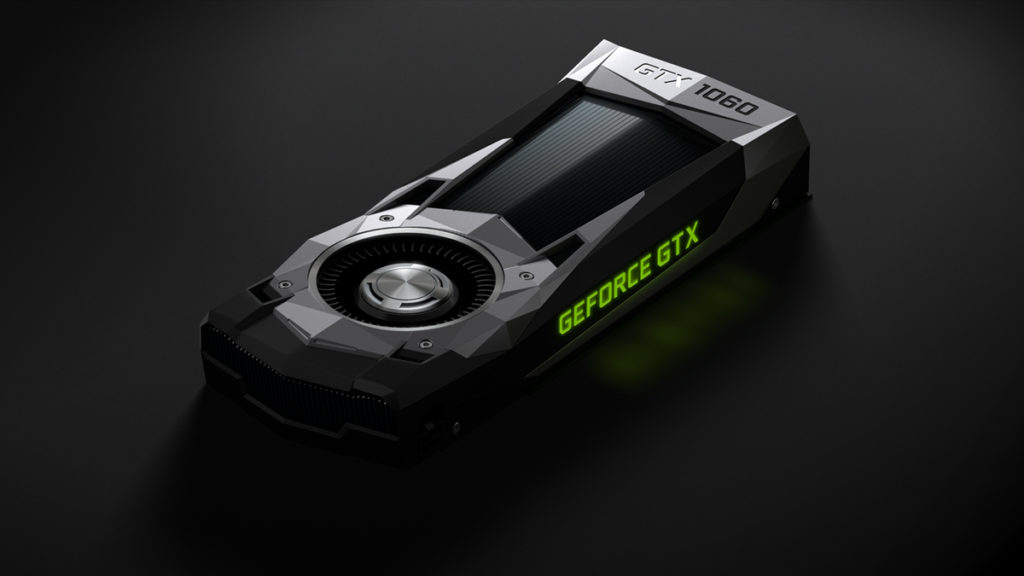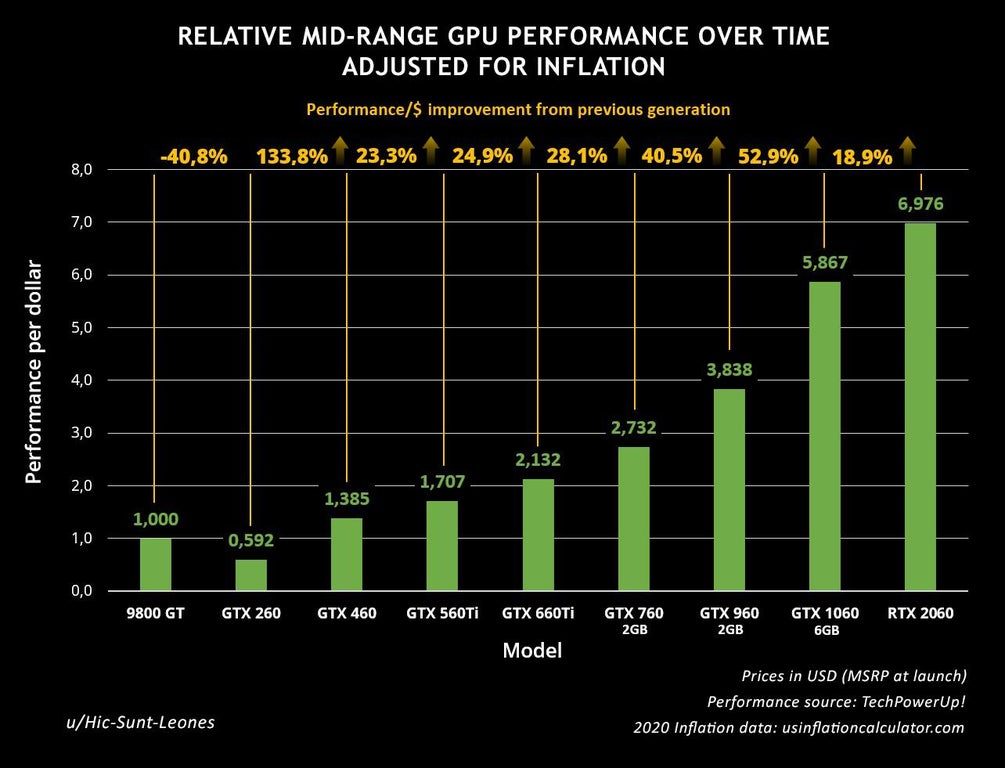- Joined
- May 6, 2019
- Messages
- 12,595
- Points
- 113
Image: NVIDIA
Have you ever wondered how much value you’ve truly gotten out of your mid-range GeForce cards? r/NVIDIA’s Hic-Sunt-Leones has drafted a chart that shows just how much each generation has provided in terms of performance per dollar.
Image: Hic-Sunt-Leones
Quite clearly, the biggest winner here (of modern times, at least) is the Pascal microarchitecture, whose GTX 1060 (6 GB) provided a 53-percent improvement from the previous generation, Maxwell. The biggest loser is Turing, whose RTX 2060 provided a mere 19-percent increase over Pascal.
Plenty of GeForce GTX 1080 Ti owners have held on to that card to this day, and the numbers in...
Continue reading...
